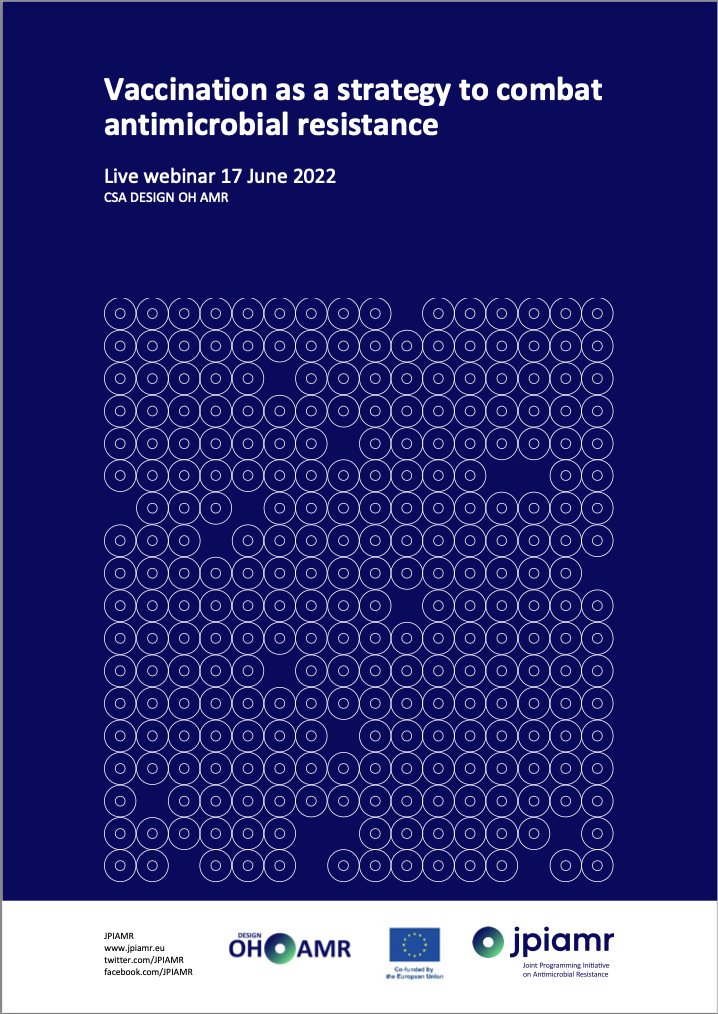 |
The following report provides an overview of the consultation regarding the role of vaccination as a tool to tackle the growing problem of antimicrobial resistance, organised by the Coordination and Support Action (CSA) DESIGN One Health AntiMicrobial Resistance (DESIGN OH AMR). The consultation was carried out by JPIAMR together with UK Medical Research Council (MRC) and the BactiVac Network.
Download the full report (PDF, 448KB): 'Vaccination as a strategy to combat antimicrobial resistance', Live webinar 17 June 2022.
|
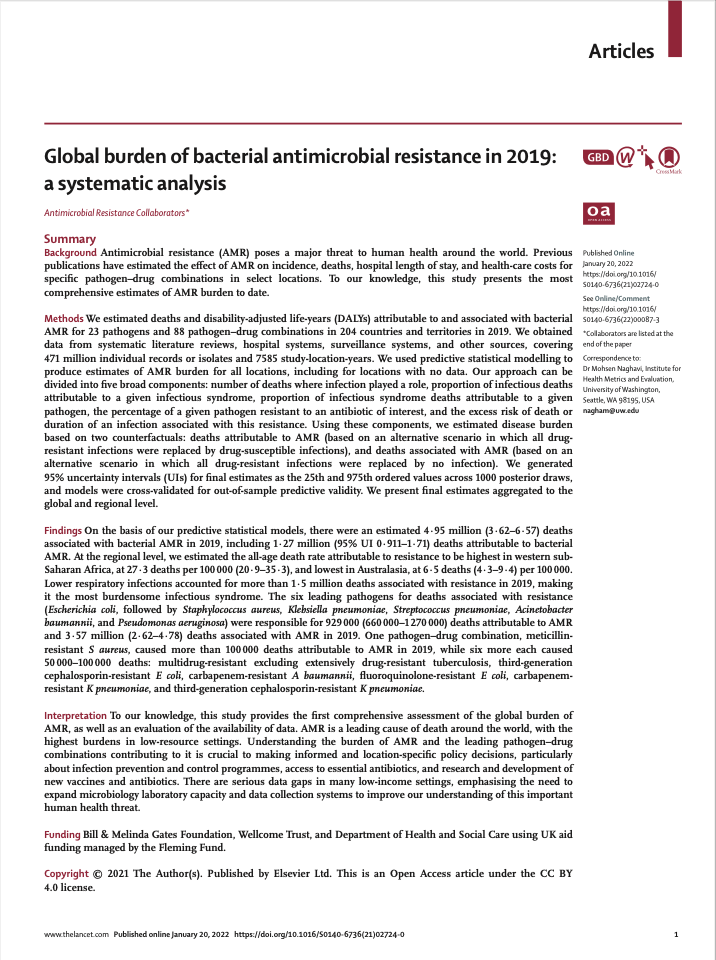 |
The study conducted by the Antimicrobial Resistance Collaborators provides a comprehensive assessment of the global burden of AMR, as well as an evaluation of the availability of data. AMR is a leading cause of death around the world, with the highest burdens in low-resource settings. Understanding the burden of AMR and the leading pathogen–drug combinations contributing to it is crucial to making informed and location-specific policy decisions, particularly about infection prevention and control programmes, access to essential antibiotics, and research and development of new vaccines and antibiotics.
Download the full article (PDF, 3.7MB): 'Global burden of bacterial antimicrobial resistance in 2019: a systematic analysis', 19 January 2022.
|
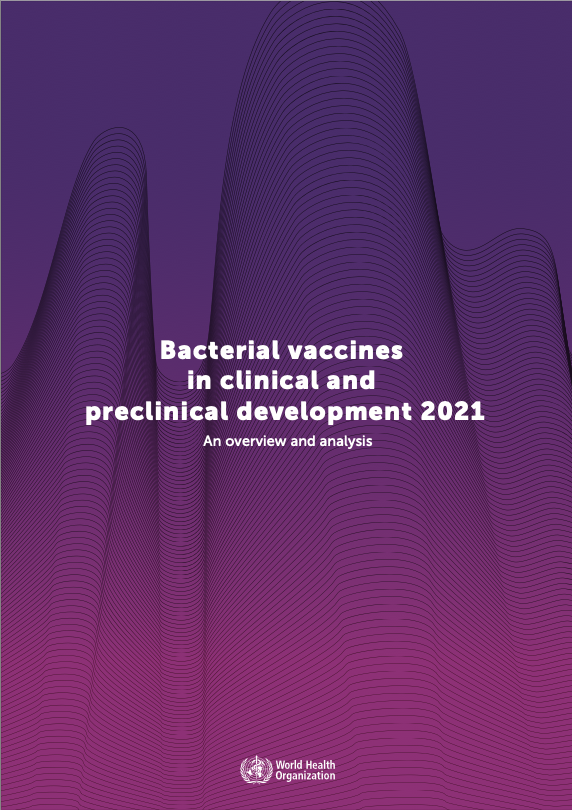 |
WHO analysis considers vaccine candidates in preclinical and clinical development against pathogens on the 2017 WHO Bacterial Priority Pathogens List (WHO BPPL), in addition to Clostridioides difficile and Mycobacterium tuberculosis. Sixty-one vaccine candidates in active clinical development and 94 candidates in confirmed active preclinical development were identified.
Download the full report (PDF, 8.1MB): 'Bacterial vaccines in clinical and preclinical development: an overview and analysis', Geneva: World Health Organization; 2022.
|
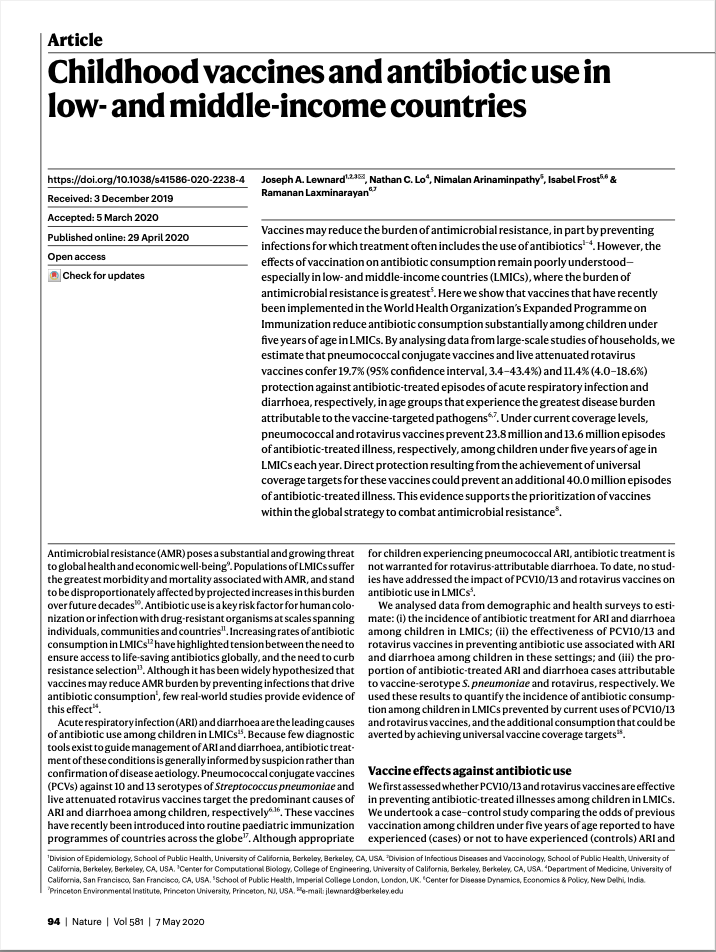 |
Vaccines may reduce the burden of antimicrobial resistance, in part by preventing infections for which treatment often includes the use of antibiotics. However, the effects of vaccination on antibiotic consumption remain poorly understood— especially in low- and middle-income countries (LMICs), where the burden of antimicrobial resistance is greatest. The paper shows that vaccines that have recently been implemented in the World Health Organization’s Expanded Programme on Immunization reduce antibiotic consumption substantially among children under five years of age in LMICs.
Download the full paper (PDF, 5.9MB): Lewnard, J.A., Lo, N.C., Arinaminpathy, N. et al. 'Childhood vaccines and antibiotic use in low- and middle-income countries'. Nature 581, 94–99 (2020).
|
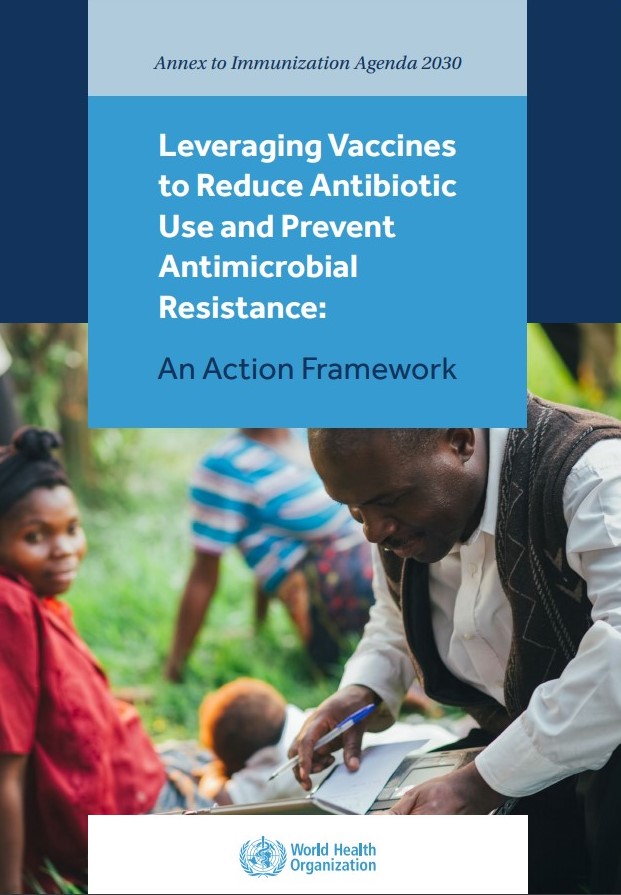 |
In 2021, WHO has developed a strategy to articulate the role of vaccines against AMR, a technical annex to the Immunization Agenda 2030, and an action framework that describes a vision for vaccines to contribute fully, sustainably and equitably to the prevention and control of antimicrobial resistance by preventing infections and reducing antimicrobial use.
Download the action framework (PDF, 2.3MB): 'Leveraging Vaccines to Reduce Antibiotic Use and Prevent Antimicrobial Resistance'.
|
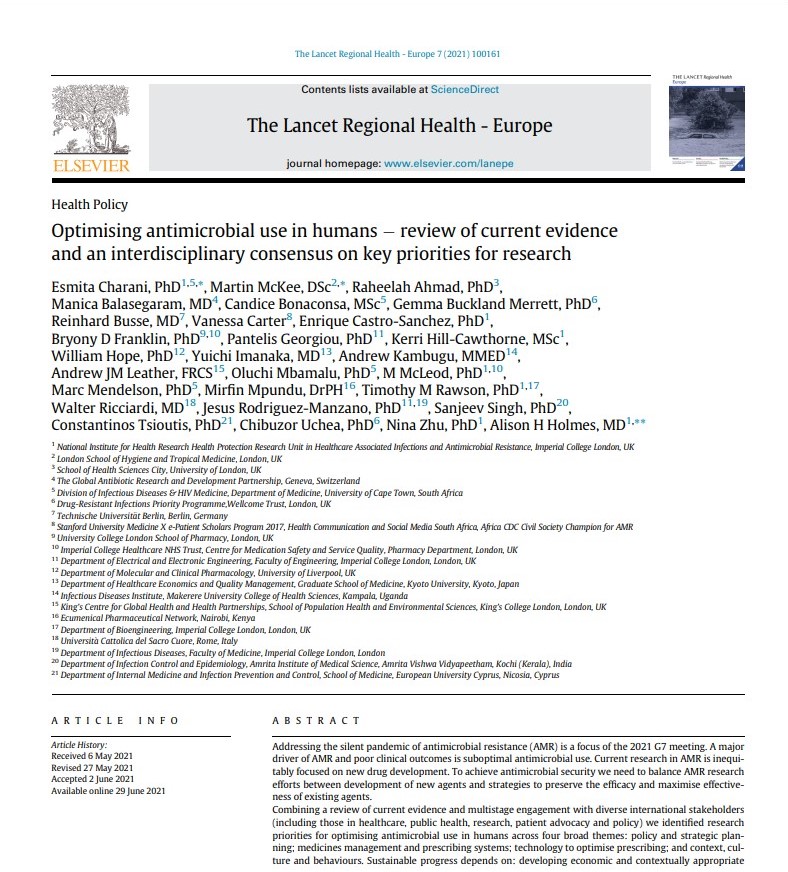 |
Charani et al. (2021) combine a review of current evidence and multistage engagement with diverse international stakeholders (including those in healthcare, public health, research, patient advocacy and policy) in order to identify research priorities for optimising antimicrobial use in humans across four broad themes: policy and strategic planning; medicines management and prescribing systems; technology to optimise prescribing; and context, culture and behaviours.
Download the full review (PDF, 2.1MB).
|
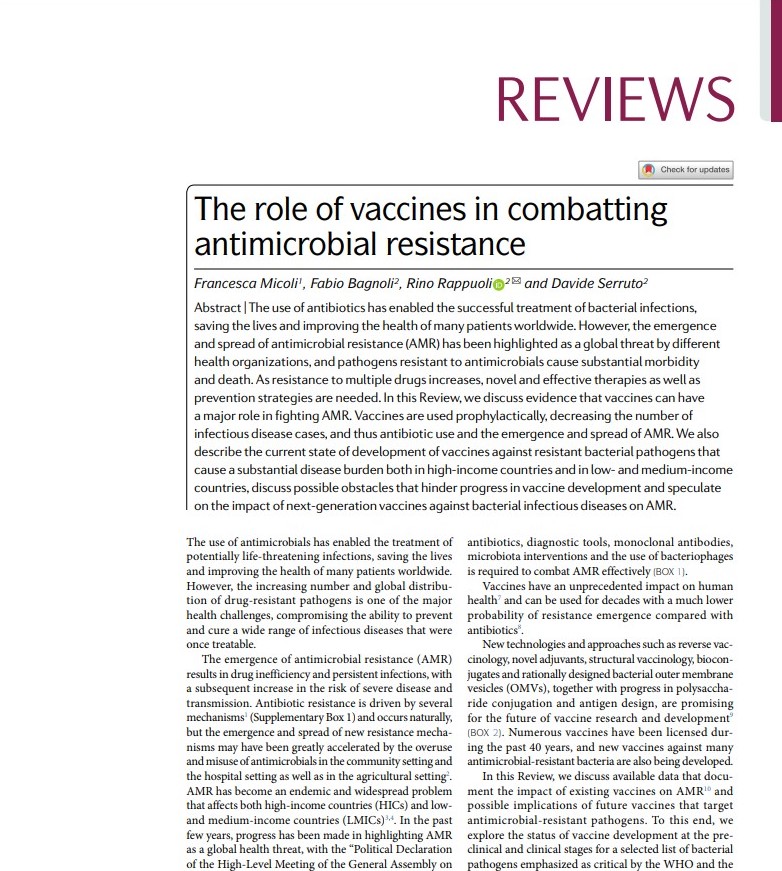 |
Micoli et al. (2021) discuss evidence that vaccines can have a major role in fighting AMR. Vaccines are used prophylactically, decreasing the number of infectious disease cases, and thus antibiotic use and the emergence and spread of AMR. They also describe the current state of development of vaccines against resistant bacterial pathogens that cause a substantial disease burden both in high-income countries and in low- and medium-income countries, discuss possible obstacles that hinder progress in vaccine development and speculate on the impact of next-generation vaccines against bacterial infectious diseases on AMR.
Download the full report (PDF, 3.1MB): 'The role of vaccines in combatting antimicrobial resistance'.
|
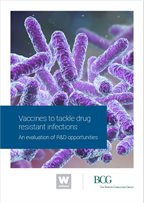 |
In 2018, Wellcome commissioned the Boston Consulting Group to assess the opportunities and challenges around developing vaccines for humans to tackle AMR. This report uses the World Health Organisation (WHO) priority pathogen list as a starting point.
Download the full report (PDF, 5.5MB): 'Vaccines to tackle drug resistant infections. An evaluation of R&D opportunities'.
|
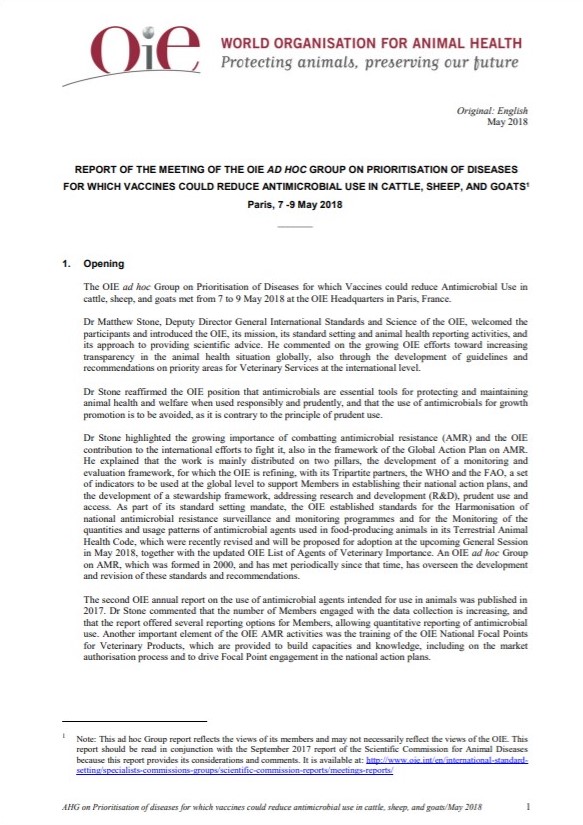 |
In 2018, the World Organisation for Animal Health (OIE) assembled an ad hoc group to prioritise diseases and pathogens for which vaccines could reduce use of antimicrobials in cattle, sheep and goats.
Download the full report (PDF, 607KB).
|
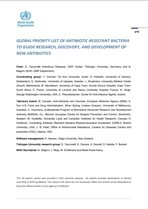 |
In 2017, the WHO released an updated version of the priority pathogen list of antibiotic-resistant bacteria that pose the greatest threat to human health. The purpose of this list is to guide research and the discovery and development of new antibiotics.
Read the update online.
|
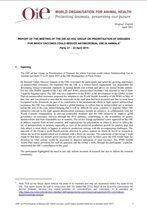 |
In 2015, the World Organisation for Animal Health (OIE) assembled an ad hoc group to prioritise diseases and pathogens for which vaccines could significantly reduce antimicrobial use in animals. With the current and projected global production growth for swine, poultry and aquaculture, the ad hoc group identified opportunities for the development of several new vaccines as well as the improvement of existing ones.
Download the full report (PDF, 499KB).
|